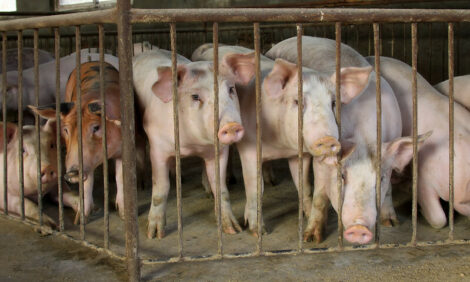



Hog Outlook: The Importance of Production Contracts
US Weekly Hog Outlook, 15th September 2007 - Weekly review of the US hog industry, written by Glenn Grimes and Ron Plain.Production contracts have become a very important part of the U.S. hog industry according to a study this year by the University of Missouri and Iowa State University with financial assistance from the National Pork Board, Pig Improvement Company and Pork Magazine.
The percent of U.S. hogs farrowed under a production contract declined a little from 2003-2006, but the number finished under a production contract continues to grow into 2006.
| Percent of U.S. Hogs Raised by Growers under Contract, 1997-2006 | ||||||||
|---|---|---|---|---|---|---|---|---|
| Firm Size (thousand head mktd.) |
Farrowed |
Finished |
||||||
| 1997 | 2000 | 2003 | 2006 | 1997 | 2000 | 2003 | 2006 | |
| 1 - 50 | 1% | 2% | 7% | 1% | 8% | 3% | 5% | 7% |
| 50 - 500 | 4 | 7 | 5 | 4 | 7 | 10 | 11 | 14 |
| 500+ | 11 | 13 | 17 | 15 | 16 | 21 | 25 | 25 |
| Total | 17 | 22 | 23 | 20 | 30 | 34 | 41 | 46 |
The average length of production contracts grew substantially for the larger producer but was mixed for the smaller operations. The reason for the longer-term contracts is probably due to the increase of costs of building. To make the loan viable to construct buildings it is requiring a longer payoff period. Therefore, lenders are exerting pressure for longer-term contracts.
| Average Length of Production Contracts in Months | ||||||
|---|---|---|---|---|---|---|
| Firm Size (thousand head mktd) | ||||||
| 1 - 50 | 50 - 500 | 500+ | ||||
| 2003 | 2006 | 2003 | 2006 | 2003 | 2006 | |
| Finishing | 41 | 27 | 68 | 78 | 69 | 81 |
| Nursery | 46 | 25 | 68 | 84 | 54 | 59 |
| Farrow or farrow-finish | 49 | 66 | 62 | 75 | 64 | 83 |
| Nursery-finishing | 29 | 31 | 53 | 86 | 63 | 91 |
Hog producers received good news Wednesday morning. USDA increased the September estimate of the 2007 corn crop two percent from the August estimate. The current estimate of the 2007 crop is 13.3 billion bushels. The yield per acre was increased from 152.8 bushels per acre in August to 155.8 bushels in September.
It now looks like corn prices for the next year are likely to be close to the past 12 months. Corn prices are not likely to be pushed sharply lower or there will be too many acres of corn shifted to soybean next year. In fact, we are concerned that too many acres may be shifted to soybean next year to hold corn prices in the low $3-per-bushel level in 2008-2009.
Pork product prices Thursday afternoon showed the cutout at $67.45 per cwt of carcass, down $0.26 per cwt from a week earlier. Loin prices were down $1.55 at $82.29 per cwt, Boston butts at $163.17 per cwt were up $1.25 per cwt, hams were up $2.62 per cwt at $59.61 per cwt and bellies at $182.20 per cwt were down $1.34 per cwt from a week earlier.
The live weights for barrows and gilts in Iowa-Minnesota last week at 264.9 pounds were up 1.9 pounds from a week earlier and up 0.7 pound from a year earlier.
Live hog prices Friday morning were steady to $1 higher compared to a week earlier. Weighted average carcass prices Friday morning were $0.93-3.62 per cwt higher compared to seven days earlier for negotiated hogs.
The top live prices this Friday morning for select markets were: Peoria $40 per cwt, St. Paul $41 per cwt and interior Missouri $42 per cwt. The weighted average negotiated carcass prices Friday morning by area were: western Cornbelt $63.61 per cwt, eastern Cornbelt $59.37 per cwt, Iowa-Minnesota $63.70 per cwt and nation $61.11 per cwt.
Feeder pig prices at United Tel-o-Auction this week were surprisingly strong, up $15-20 per cwt from two weeks earlier. However, feeder pig prices in general are under pressure at the current time.
Hog slaughter this week under Federal Inspection was estimated at 2,226 thousand head, up 4.1 percent from a year earlier.






